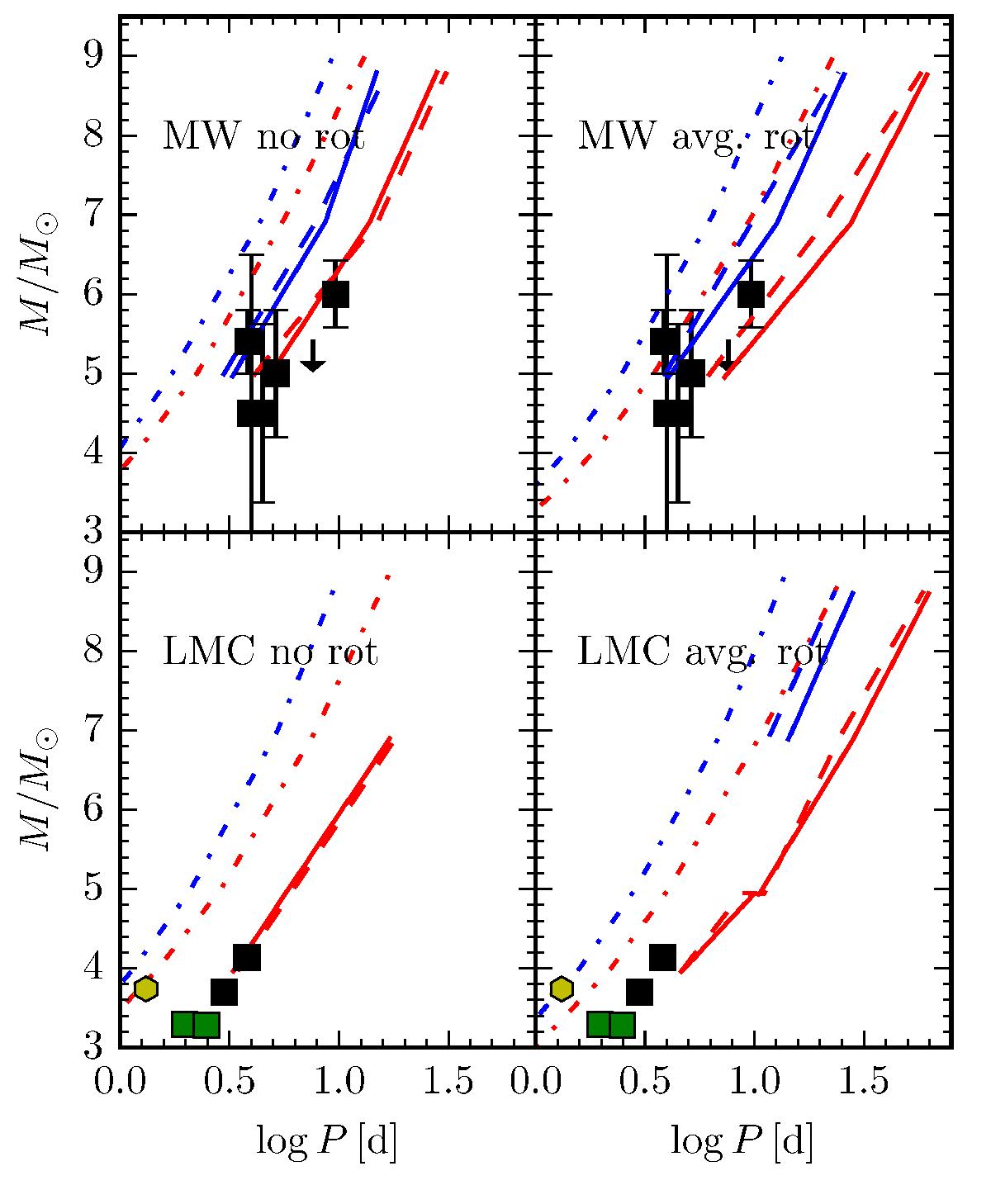Fig. 14

Predicted Cepheid masses against fundamental mode pulsation period compared to model-independent Cepheid masses from (Evans et al. 2006, 2008, 2009, 2011, and references therein) for Galactic Cepheids (upper panel), and masses for LMC Cepheids (lower panel) in eclipsing binary systems from the Araucaria project (Pietrzyński et al. 2010, 2011; Gieren et al. 2014, 2015). Upper panels are for solar metallicity, and lower panels for LMC metallicity, whereas left panels show models without rotation and right panels those with average rotation (ω = 0.5). Relations are shown separately for first (dash-dotted), second (dashed) and third crossing (solid). Red lines represent the cool edge, blue lines the blue IS edge. Observational data for fundamental mode Cepheids is plotted as black squares with errorbars, overtone pulsators as green squares with errorbars. OGLE-LMC-CEP-1812 (yellow hexagon, LMC) is an expected outlier as there is evidence it may have undergone a merger and does not appear to be a classical Cepheid (Neilson et al. 2015). Note that blue loops of low-mass LMC models do not cross the blue IS edge, hence only red boundary predictions can be shown.
Current usage metrics show cumulative count of Article Views (full-text article views including HTML views, PDF and ePub downloads, according to the available data) and Abstracts Views on Vision4Press platform.
Data correspond to usage on the plateform after 2015. The current usage metrics is available 48-96 hours after online publication and is updated daily on week days.
Initial download of the metrics may take a while.


